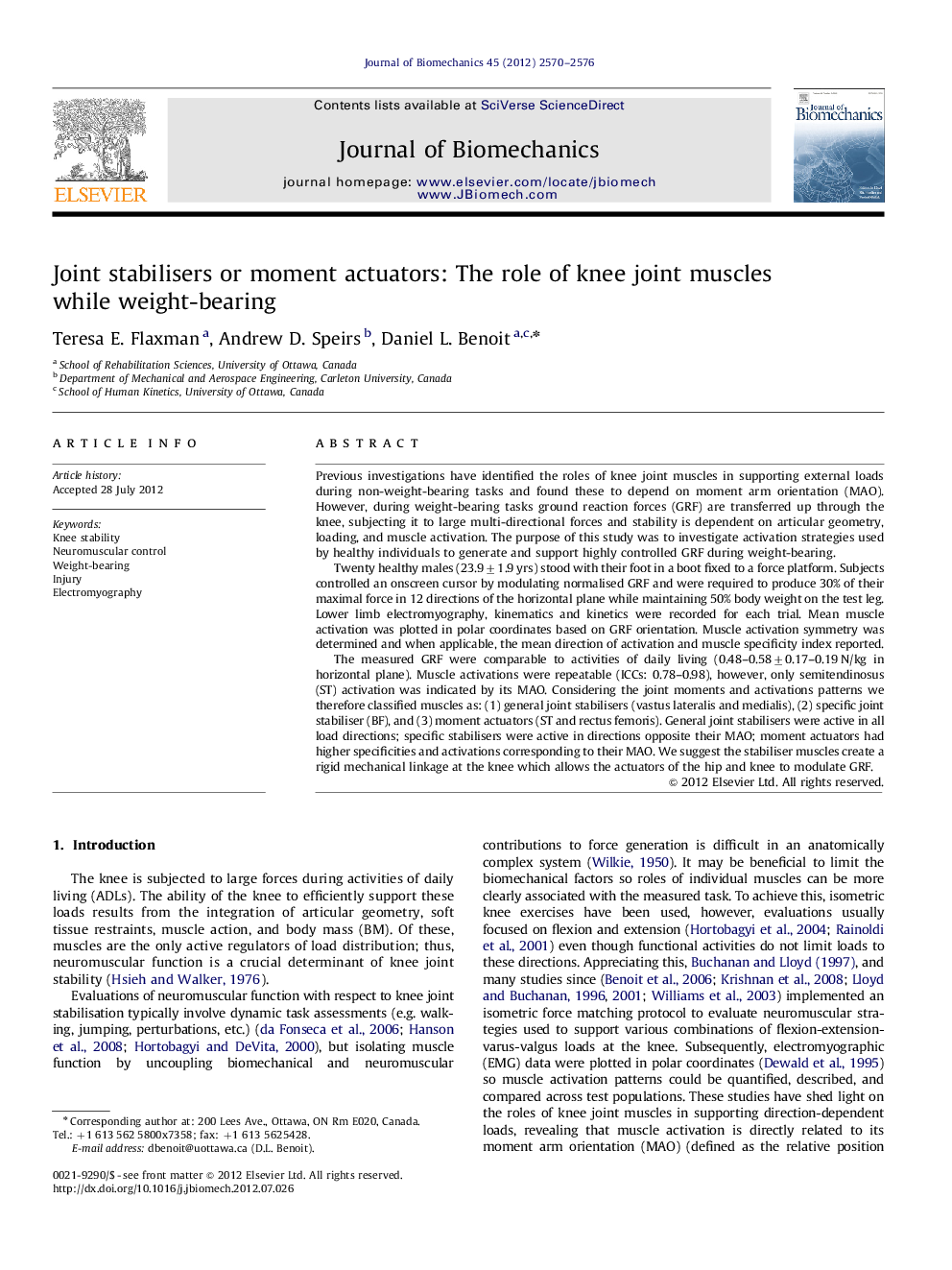| Article ID | Journal | Published Year | Pages | File Type |
|---|---|---|---|---|
| 872243 | Journal of Biomechanics | 2012 | 7 Pages |
Previous investigations have identified the roles of knee joint muscles in supporting external loads during non-weight-bearing tasks and found these to depend on moment arm orientation (MAO). However, during weight-bearing tasks ground reaction forces (GRF) are transferred up through the knee, subjecting it to large multi-directional forces and stability is dependent on articular geometry, loading, and muscle activation. The purpose of this study was to investigate activation strategies used by healthy individuals to generate and support highly controlled GRF during weight-bearing.Twenty healthy males (23.9±1.9 yrs) stood with their foot in a boot fixed to a force platform. Subjects controlled an onscreen cursor by modulating normalised GRF and were required to produce 30% of their maximal force in 12 directions of the horizontal plane while maintaining 50% body weight on the test leg. Lower limb electromyography, kinematics and kinetics were recorded for each trial. Mean muscle activation was plotted in polar coordinates based on GRF orientation. Muscle activation symmetry was determined and when applicable, the mean direction of activation and muscle specificity index reported.The measured GRF were comparable to activities of daily living (0.48–0.58±0.17–0.19 N/kg in horizontal plane). Muscle activations were repeatable (ICCs: 0.78–0.98), however, only semitendinosus (ST) activation was indicated by its MAO. Considering the joint moments and activations patterns we therefore classified muscles as: (1) general joint stabilisers (vastus lateralis and medialis), (2) specific joint stabiliser (BF), and (3) moment actuators (ST and rectus femoris). General joint stabilisers were active in all load directions; specific stabilisers were active in directions opposite their MAO; moment actuators had higher specificities and activations corresponding to their MAO. We suggest the stabiliser muscles create a rigid mechanical linkage at the knee which allows the actuators of the hip and knee to modulate GRF.
